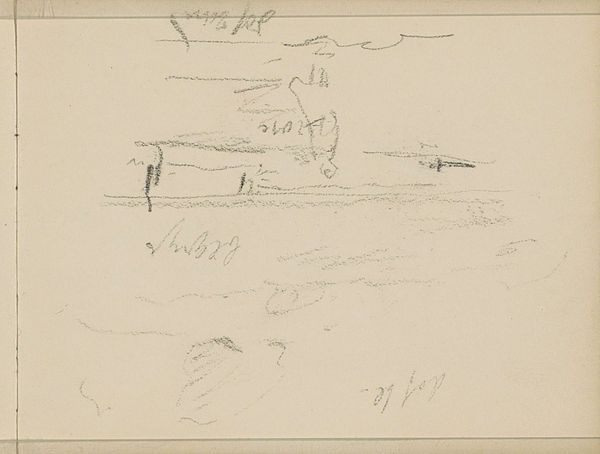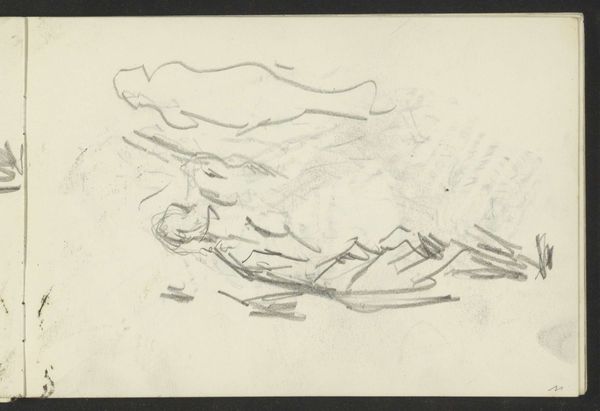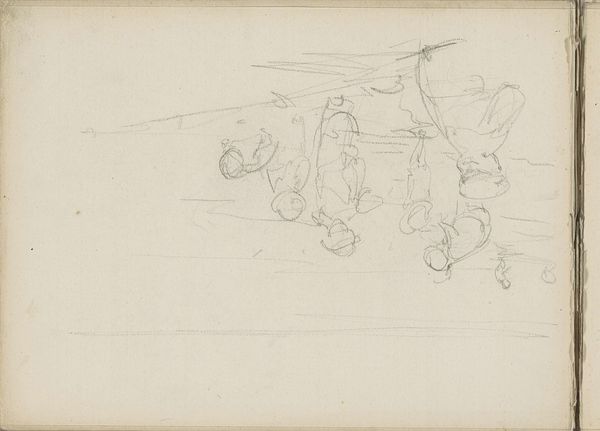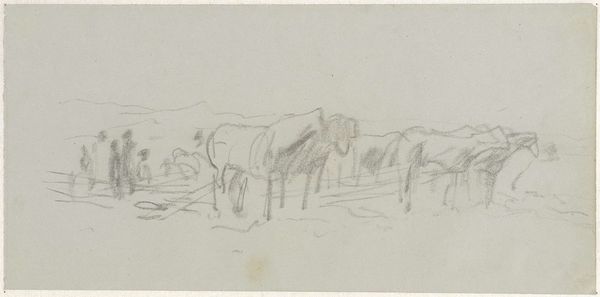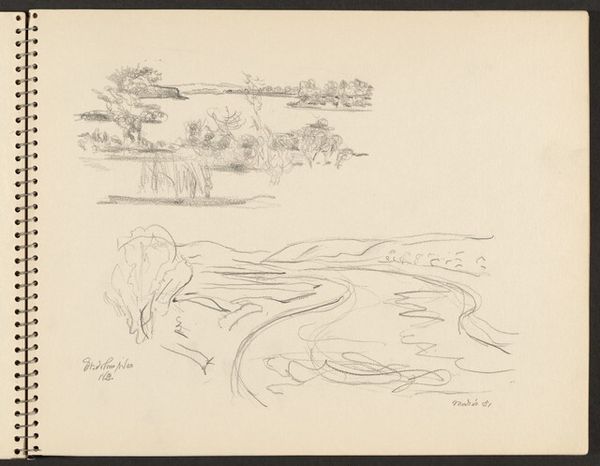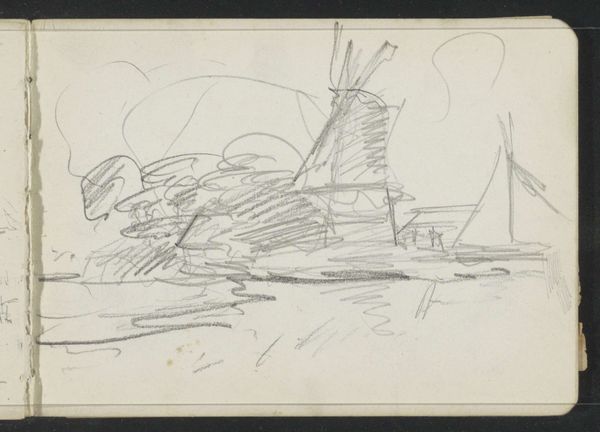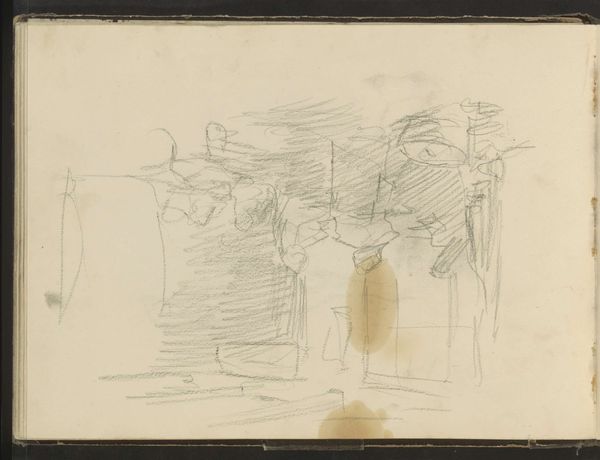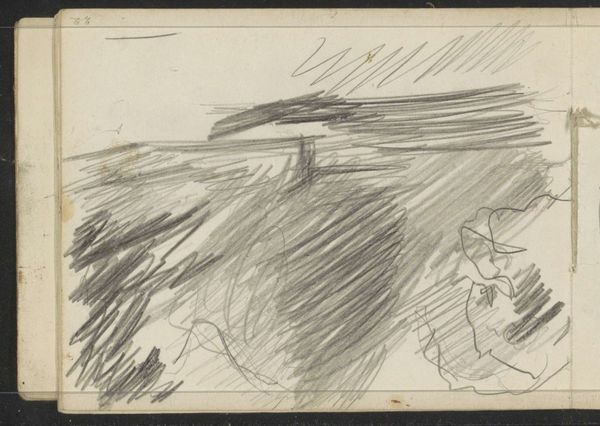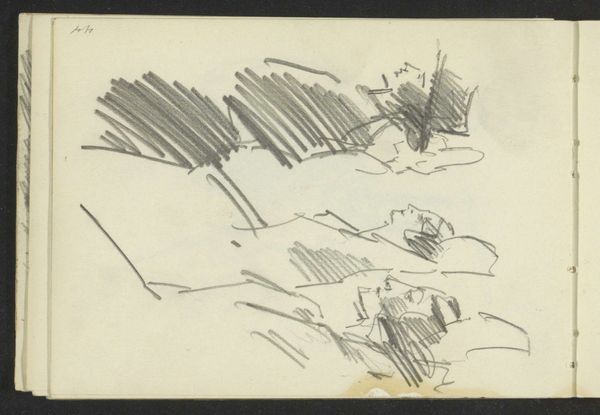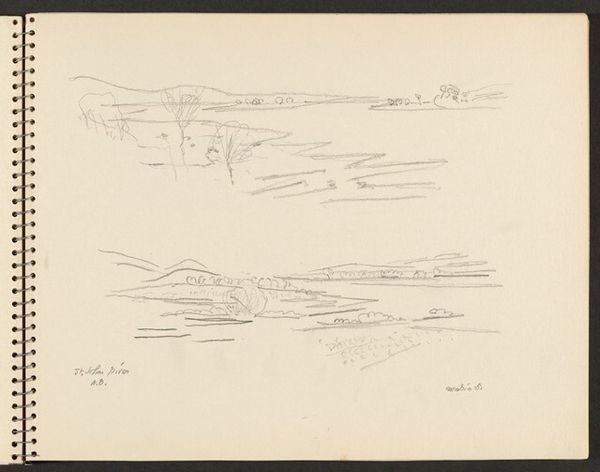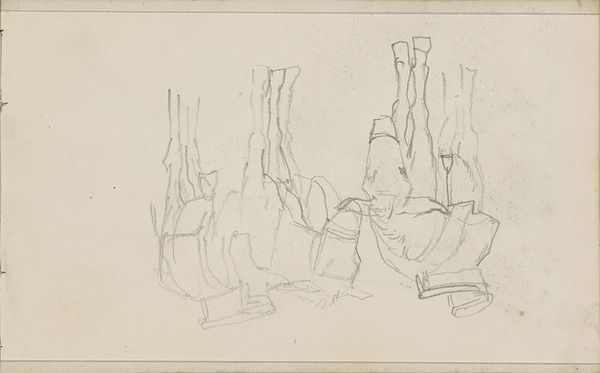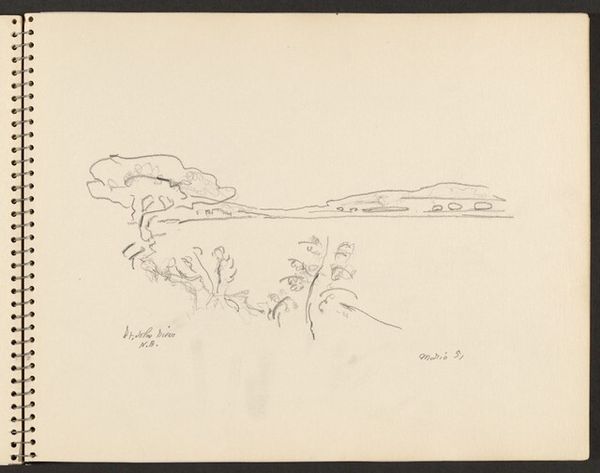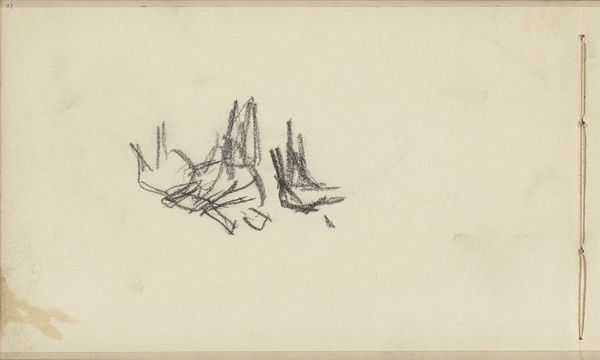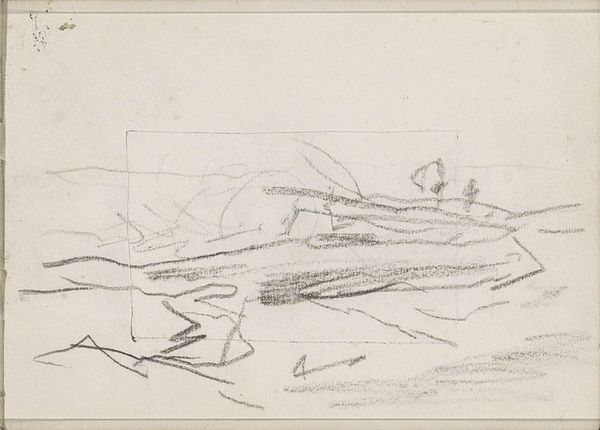
drawing, pencil
#
drawing
#
imaginative character sketch
#
pen illustration
#
pen sketch
#
landscape
#
personal sketchbook
#
ink drawing experimentation
#
pen-ink sketch
#
pencil
#
thin linework
#
line
#
pen work
#
sketchbook drawing
#
sketchbook art
#
realism
Dimensions: sheet: 27.94 × 35.24 cm (11 × 13 7/8 in.)
Copyright: National Gallery of Art: CC0 1.0
Curator: This drawing, titled "Ship's Stern Island, Maine," comes to us from John Marin, and was completed in 1951. Editor: It has a rather skeletal feeling. The minimal linework evokes bare bones. Almost a primal sketch of an island’s essence. Curator: Indeed. Marin's work often presents the raw energy of nature, doesn't it? Maine held deep significance for him as a source of inspiration. The motif of an island bears a rich legacy as a powerful archetype. Do you think it offers some perspective on ideas about separation? Editor: Absolutely. Look at the paper itself: a page torn from a sketchbook, held together by its spiral binding, grounding the entire piece within a specific context of artistic labor. Curator: That material reality becomes a visual prompt to consider the social and emotional terrain embedded in an image. It feels provisional. Editor: The pencil or ink lines are so spare, like he's stripping away everything inessential. No fancy papers or painstaking studio process here, just raw observation converted to form. Curator: There’s almost a sense of immediacy, as if he’s capturing not just the island but the fleeting feeling of it. It captures something intrinsic, even inevitable, about humanity's relationship with geographic formations. What lies beneath our desire to demarcate these shapes? Editor: What interests me is how that feeling is caught. There's no heavy blending of pencils, rather a straightforward, immediate impression. Labor over medium gives us more access to what must've struck him about the Stern Island. Curator: The lack of polish emphasizes the honesty of vision, almost inviting us into his thought process. Perhaps this drawing hints at cycles of birth and decay. Maine certainly holds that meaning within an American psyche, given how early it was settled, industrialized, abandoned, and reinvented through tourism. Editor: Right, we're witnessing a moment in the hand-to-eye coordination, translating geographical location into representation of location, all within this sketch book context. Curator: Well, considering Marin's legacy, this piece feels more than a simple sketch. It stands as an icon itself—pointing back towards nature while bearing witness to the power inherent in artistic creation. Editor: Exactly, and as such the bareness of this visual statement strikes a sharp contrast between labor, tools, and the weight it yields as a sketch in fine art today.
Comments
No comments
Be the first to comment and join the conversation on the ultimate creative platform.
